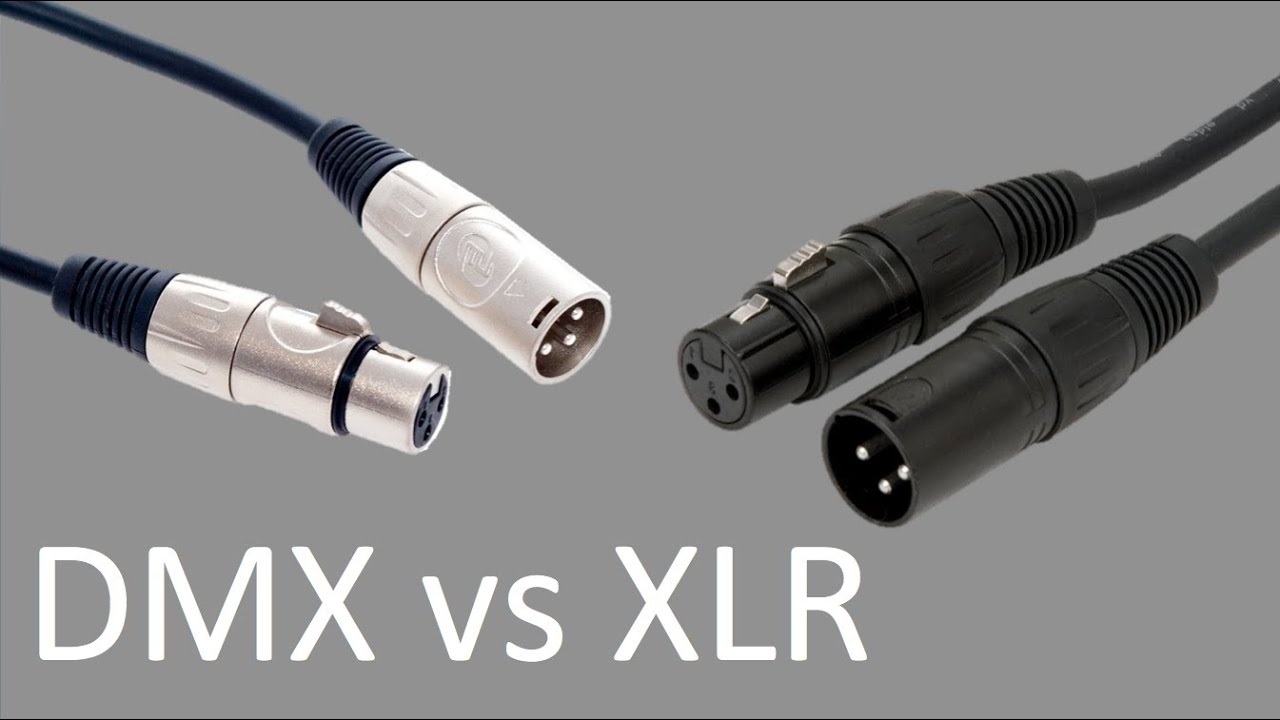
When it comes to cables in professional audio and lighting setups, XLR and DMX are two widely used types. At a glance, they might appear similar due to their standard 3-pin configuration, but their purposes and technical specifications differ significantly.
What is DMX?
DMX stands for Digital Multiplex and refers to the DMX512 protocol, a digital communication standard used in lighting systems. Introduced in 1986, DMX was designed to adapt to existing XLR connectors for compatibility.
- 5-Pin DMX Configuration:
- DMX introduced a 5-pin format to accommodate additional functionalities, though in practice, most 5-pin cables use only 3 active pins, leaving 2 pins unused.
- Conversions between 3-pin and 5-pin DMX are straightforward with adapters.
- Purpose of DMX Cables:
- DMX cables are specifically built to carry data signals, not audio.
- These cables communicate lighting commands like brightness, color changes, and movement patterns.
- They require a standard impedance of 110 ohms for optimal data transmission.
What is an XLR Cable?
XLR cables are primarily used for analog audio applications, such as microphones and other sound equipment.
- Impedance:
- XLR cables do not require a specific impedance rating, typically ranging between 45 and 75 ohms.
- This makes them suitable for transferring audio signals with minimal interference.
- Common Configurations:
- The most common XLR formats are 3-pin and 5-pin, though some proprietary 4-pin versions exist for specific uses like intercom systems.
Key Differences Between XLR and DMX Cables
- Signal Type:
- DMX cables carry digital data signals for lighting control, while XLR cables handle analog audio signals.
- Impedance:
- DMX requires a 110-ohm impedance, whereas XLR cables typically range between 45-75 ohms, making them incompatible for reliable DMX use.
- Application:
- DMX is ideal for lighting and effects control, while XLR is used for microphones, audio equipment, and interconnects.
Can You Use XLR Instead of DMX (and Vice Versa)?
Using XLR for DMX Applications:
- Technically possible, but not recommended.
- XLR cables are not rated for the 110-ohm impedance required by DMX, leading to possible issues like flickering or inconsistent lighting.
Using DMX for XLR Applications:
- Possible but problematic.
- DMX cables lack the rugged build and shielding needed for audio applications, which could result in noise interference or damage over time.
How to Choose the Right Cable
- DMX Cable Features:
- Ensure it is rated for 110 ohms.
- Look for braided shielding and durable connectors for longevity.
- Determine whether your setup needs 3-pin, 5-pin, or an adapter for conversion.
- XLR Cable Features:
- Opt for cables with good shielding for noise reduction.
- Choose rugged designs suitable for heavy use in performance settings.
Conclusion
The golden rule is simple: use the right cable for the right application.
- Use DMX cables for lighting to ensure uninterrupted data transmission.
- Use XLR cables for audio to maintain signal integrity and durability.
Investing in the appropriate cables for each use case ensures better performance and avoids unnecessary frustrations.










































































































